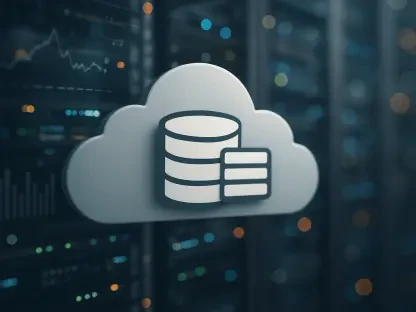As educational institutions increasingly transition towards cloud-based solutions, the experiences and insights of various K–12 school district IT leaders and experts provide valuable perspectives on the current state of cloud adoption, its benefits, challenges, and the impact on IT roles and overall school operations.
Cloud Adoption in School Districts
Transition to Cloud-Based Curriculum and Business Applications
Matt Penner, director of information and instructional technology at Val Verde Unified School District in California, shares that nearly 100% of their curriculum is hosted in the cloud, while 50% of their business applications have made the transition. They have significantly reduced their on-premises servers and are working with Microsoft to migrate a majority of their remaining servers to Azure. By shifting most of their critical components to the cloud, Val Verde Unified School District aims to enhance accessibility and optimize their resources effectively, ensuring that both students and administrative staff benefit from the robust infrastructure that cloud platforms provide.
Rob Dickson, CIO of Wichita Public Schools in Kansas, states that about 90% of their operations are cloud-based, with email hosted on Microsoft 365, core resources on Azure, and various systems such as financials, student information, and library circulation in the cloud. This substantial cloud adoption indicates not only a preference for the scalability and reliability associated with cloud services but also a future-proofing strategy that aligns with the growing technological needs of modern educational environments. For Wichita Public Schools, operating predominantly in the cloud has streamlined their administrative tasks and allowed for swifter responses to system demands.
Diverse Cloud Strategies and Progress
Noe Arzate, CTO of Mount Pleasant Independent School District in Texas, reports being 30% in the cloud, with a target of 40% following the spring migration of a library application. Their journey began five years ago with a move to Amazon Web Services (AWS) for their web presence and continued integration with Microsoft Azure. This gradual yet strategic shift highlights the district’s cautious yet progressive approach to cloud adoption, ensuring minimal disruption while leveraging the cloud’s capabilities. The incremental increase in cloud resources reflects a methodical plan designed to balance immediate needs with long-term goals.
Sean Brinkman, CTO of Dallas Independent School District, estimates that about 90% of their enterprise applications are cloud-based, with plans to reach 95% soon. They use a blend of AWS and Azure and are moving their final core application, Enterprise Resource Planning (ERP), to Oracle Cloud. Dallas Independent School District’s choice of a multi-cloud strategy underscores the importance of flexibility and vendor diversity, ensuring that they can capitalize on the strengths of various cloud platforms. The anticipated migration of their ERP system to Oracle Cloud further emphasizes their commitment to leveraging comprehensive cloud solutions, enhancing operational efficiency and business continuity.
Benefits of Cloud Computing
Enhanced Security and Accessibility
Ashley Cross, senior director of education and content at the Association of Technology Leaders in Independent Schools (ATLIS), highlights that independent schools now recognize that cloud providers offer more robust security than what could be achieved solely with on-site IT staff. This sentiment is echoed by Rob Dickson, who adds that cloud assets are monitored 24/7 by trained and certified professionals, a level of security that is difficult to match with in-house teams. The realization among these institutions about the superior security measures of cloud platforms is a decisive factor steering them towards comprehensive cloud adoption.
The ability to access applications and data from anywhere is a significant advantage, as noted by Cross. Sean Brinkman elaborates by sharing an example where their assessment system’s scalability in the cloud allowed rapid adjustments with vendor support. This instant accessibility and ability to scale operations in response to evolving needs demonstrate the cloud’s potential to enhance educational efficacy and administrative agility. The flexibility provided by cloud services means that schools can adapt quickly to changing educational demands and maintain continuity of learning during unforeseen circumstances.
Disaster Recovery and Reduced IT Burden
Dickson explains that being backed up across multiple cloud locations enhances disaster recovery capabilities, an aspect less feasible with solely on-premises infrastructure. Cross points out the reduction in maintenance demands and the predictability of subscription pricing, leading to cost savings and less need for large capital hardware investments. These aspects of cloud computing are not only technologically advantageous but also financially prudent, offering schools a sustainable model for IT investment. The assurance of disaster recovery through cloud backups translates to resilient operations, crucial for maintaining educational processes without interruptions.
According to Penner, the cloud’s impact allows IT departments to focus on business value and collaborate more effectively with other departments on innovative ideas and projects. This shift from routine maintenance tasks to more strategic and innovative initiatives is transforming how IT departments operate within educational institutions, fostering a culture of continuous improvement and cross-functional collaboration. As IT teams are liberated from the monotony of upkeep tasks, they can partner with academic departments to enhance educational technologies and administrative systems, contributing directly to the institution’s mission and goals.
Impact on IT Roles and Skills
Evolution of IT Skill Sets
Noe Arzate notes that while cloud technologies improve ease of use, they also demand a higher level of familiarity with cloud-specific skills. This observation is supported by Rob Dickson, who mentions that IT roles either evolve, are eliminated, or require new talent acquisition. The upward trajectory in cloud adoption necessitates a corresponding evolution in the skill sets of IT professionals, who must be proficient in various cloud environments and technologies. This transition is pushing IT departments to invest in ongoing training and professional development to keep pace with the rapid advancements in cloud computing.
Penner illustrates that cloud computing allows the IT department to concentrate on providing business value rather than being bogged down by routine maintenance tasks. This shift fosters a more proactive and collaborative IT environment. As a result, IT professionals are now more engaged in strategic planning, innovation, and enhancing the overall educational experience. The ability to focus on high-value initiatives rather than maintenance not only boosts job satisfaction among IT staff but also signifies a profound transformation in how educational institutions leverage technology to meet their goals.
Importance of Cloud Governance
Establishing Frameworks and Policies
Ashley Cross discusses the importance of clear policies and processes, particularly concerning data privacy, compliance, access controls, and cost optimization. Effective cloud governance is essential to ensure that the shift to the cloud aligns with regulatory standards and institutional policies, safeguarding sensitive educational data from unauthorized access and breaches. Cross underscores that governance frameworks like ITIL are instrumental in laying down a structured approach to cloud governance that covers all critical aspects, from data handling to operational efficiency.
Brinkman adds that a governance framework ensures that cloud applications undergo rigorous scrutiny similar to on-premises products. Establishing these frameworks allows for standardized practices and consistency in how cloud resources are managed, promoting transparency and accountability. By embedding governance in their cloud strategies, educational institutions can enhance trust among stakeholders, comply with legal and ethical obligations, and ensure that cloud initiatives deliver intended outcomes without compromising security or functionality.
Continuous Monitoring and Audits
Ensuring data privacy and security through continuous assessment and audit checks is crucial. Penner emphasizes the need for a comprehensive understanding of cloud architecture and leveraging support from vendors to maintain a secure environment. Continuous monitoring of cloud systems helps identify vulnerabilities and potential threats in real-time, enabling proactive measures to avert security incidents. Regular audits and assessments ensure that the established governance frameworks and security protocols are effective and followed meticulously.
Maintaining a robust cloud security posture requires collaborative efforts between educational institutions and cloud service providers. Institutions must avail themselves of the expertise and support offered by vendors to optimize their cloud environments continually. This partnership helps ensure that the latest security measures and industry best practices are implemented, minimizing risks and enhancing the overall resilience of cloud-based services. By prioritizing continuous monitoring and audits, schools can secure their cloud infrastructure and protect critical data against evolving cyber threats.
Security in the Cloud
Framework Utilization and Multilayered Security
Brinkman mentions using the Center for Internet Security framework and third-party tools for continuous risk monitoring and vendor collaboration to ensure robust cloud security practices. Leveraging established cybersecurity frameworks provides educational institutions with a structured methodology to safeguard their cloud environments. These frameworks offer comprehensive guidelines and best practices that help in fortifying cloud security, addressing potential vulnerabilities, and establishing a rigorous defense against cyber threats.
Arzate describes using data lakes to aggregate security systems data, allowing a holistic view of events across on-premises and cloud infrastructure through a single dashboard. This integration enables institutions to monitor and manage security across disparate systems seamlessly, providing a comprehensive understanding of the security landscape. A data-driven approach to security by aggregating and analyzing data from various sources enhances threat detection capabilities and informs strategic security decisions. Multilayered security strategies encompassing cloud and on-premises resources ensure comprehensive protection and visibility across the entire IT infrastructure.
Future of Cloud in K–12
Data Analytics and Educational Outcomes
Arzate and Cross both predict increased utilization of data analytics to synthesize and leverage data from various sources for improved educational outcomes. They envision the cloud enabling schools to gain insights into student learning and identify areas for improvement. The growing emphasis on data analytics in education is transforming how institutions approach teaching and learning, fostering an environment where decisions are driven by data insights. By harnessing data analytics, schools can tailor educational strategies to meet the diverse needs of students, track progress, and devise targeted interventions to enhance learning outcomes.
This analytical capability extends beyond academic performance to encompass operational efficiency, providing clarity and evidence for administrative decisions. The cloud’s scalability and processing power facilitate the handling of vast data sets, making it feasible to conduct comprehensive analyses that yield actionable insights. As schools become adept at leveraging data analytics, they can unlock valuable information that drives educational innovation and operational excellence, paving the way for a more personalized and effective learning experience.
Transition Point and Future Infrastructure
Penner views the current phase as a transition point, with K–12 education catching up to commercial industries in terms of cloud adoption. He anticipates that future infrastructure needs will favor cloud solutions over traditional on-premises setups, focusing on their inherent business value and efficiency. This evolutionary stage in cloud adoption signifies a paradigm shift wherein educational institutions recognize the multifaceted benefits of cloud computing that extend well beyond simple cost savings.
As schools continue to transition to cloud-based infrastructure, they are likely to experience enhanced operational agility, scalability, and collaboration capabilities. The cloud offers a sustainable path forward, granting institutions the flexibility to adapt to changing educational needs without the constraints of physical infrastructure. By integrating cloud solutions into their long-term strategic plans, schools can ensure that their technological framework supports innovation and growth, ultimately enriching the educational experience for all stakeholders.
Conclusion
As more educational institutions shift to cloud-based solutions, the experiences and insights of K–12 school district IT leaders and experts are invaluable. These perspectives shed light on the current state of cloud adoption, highlighting its benefits, challenges, and the effect on both IT roles and overall school operations. The movement towards cloud technology in schools promises several advantages, such as improved access to educational resources, enhanced collaboration among students and teachers, and streamlined administrative processes.
However, this transition also brings challenges. IT departments must navigate data security concerns, manage the migration of existing systems, and ensure that staff are adequately trained to use new tools effectively. The role of IT professionals in schools is evolving, with a stronger emphasis on managing cloud environments, protecting sensitive information, and supporting educators in integrating technology into their classrooms.
Overall, the shift to cloud-based solutions is transforming educational institutions. It is essential for school district leaders to understand both the potential benefits and the challenges they may face. By learning from the experiences of others, schools can make more informed decisions and create technology environments that support their educational goals while ensuring the security and efficiency of their operations.









